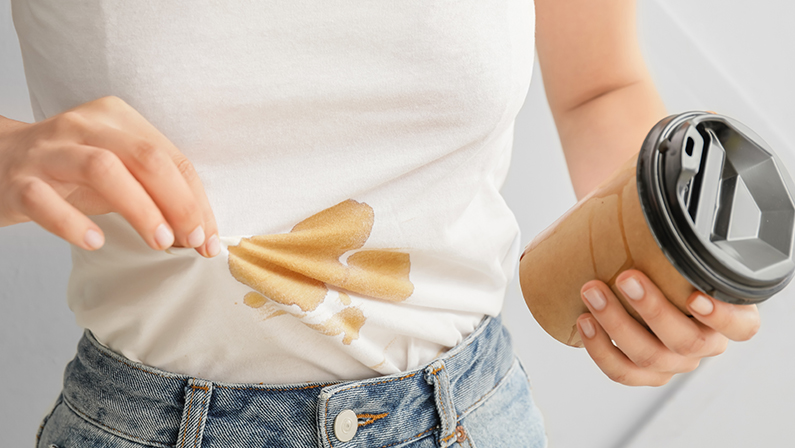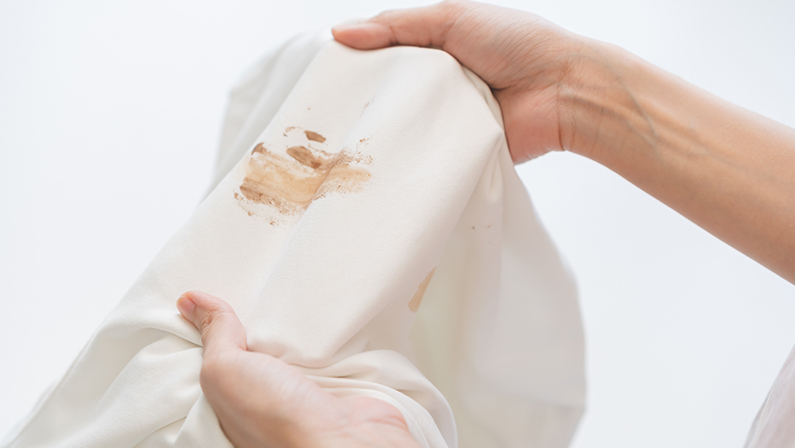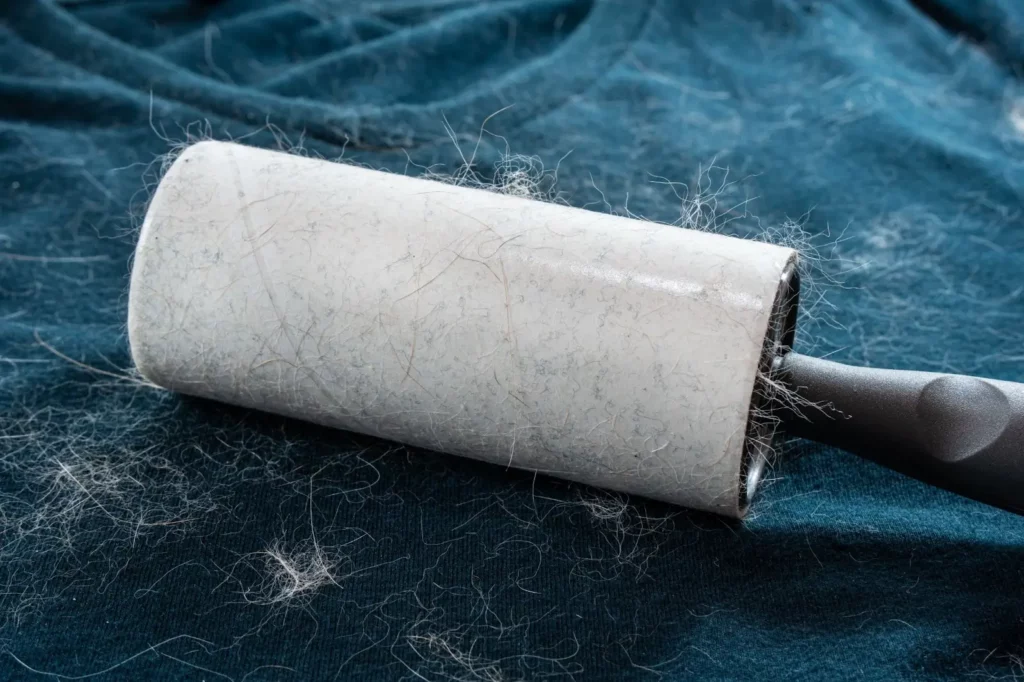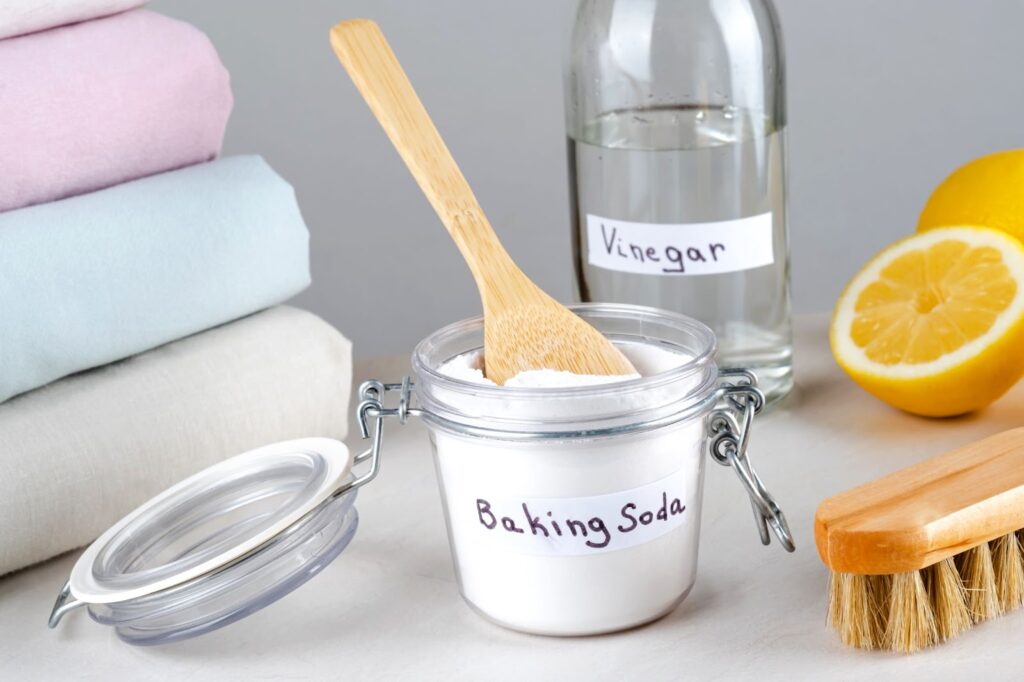
Coffee stains on clothing can be a common and frustrating occurrence. Whether you’ve spilled coffee on your favorite shirt or noticed a coffee stain on your white blouse, quick and effective action is essential. In this guide, we’ll explore the steps to remove coffee stains from clothing covering various fabrics and provide valuable tips for successful stain removal.
Are coffee stains permanent?
Coffee stains may seem daunting, but with the right approach, they can often be successfully removed. Timely action and the proper techniques play a crucial role in preventing permanent damage to your clothes.
Why are coffee stains difficult to remove?

Understanding why coffee stains pose a challenge is the first step toward effective removal. The composition of coffee, including pigments and oils, can make stains stubborn. Additionally, allowing the stain to set or using improper cleaning methods can worsen the situation.
What to Do When Coffee Spills on Your Clothes
Wondering how to remove coffee stains from clothing? A coffee spill on your clothes can be a moment of panic, but swift and correct action can prevent a lasting stain.
Here’s a step-by-step guide on what to do when the inevitable happens:
1. Act Quickly
The key to successful coffee stain removal is prompt action. The longer the coffee sits on your clothes, the more challenging it becomes to remove. As soon as the spill occurs, act swiftly to minimize the impact.
2. Grab a Clean Cloth or Paper Towel
To remove coffee stains from clothes, locate a clean cloth or paper towel immediately. The goal is to absorb as much of the spilled coffee as possible before it penetrates the fabric fibers. Avoid using colored or patterned clothes to prevent any potential transfer of dyes onto your clothing.
3. Blot, Don’t Rub
Gently blot the stained area with a clean cloth or paper towel. Patting or dabbing motions effectively soak up the liquid without spreading the stain. Remember, the objective is to lift the coffee from the fabric, not to push it further in by rubbing.
4. Work from the Outside In
When blotting, start from the outer edges of the stain and work your way toward the center. This technique helps prevent the stain from spreading to unaffected areas. Continue blotting until you’ve absorbed as much liquid as possible.
5. Turn the Clothing Inside Out
If the coffee has soaked through to the other side of the fabric, turn the clothing inside out. This allows you to focus on the stain from the reverse side, preventing it from becoming more deeply embedded.
6. Rinse with Cold Water (Optional)
If you’re in a location where you can rinse the stained area, use cold water. Hold the fabric under a gentle stream of cold water, allowing it to flow through the back of the stain. This can further dilute and remove the coffee residue.
7. Be Mindful of Fabric Type
Different fabrics may require slightly varied approaches. Always consider the care instructions on the garment’s label and adjust your stain-removal technique accordingly. Delicate fabrics may need gentler handling.
8. Avoid Hot Water and Heat
Avoid using hot water at this stage, as it can set the coffee stain. Similarly, refrain from using heat sources like hairdryers, as heat can bond the coffee particles to the fabric fibers, making removal more challenging.
Pre-Treating Coffee Stains
After the initial steps of blotting and preventing the coffee stain from setting, the next crucial phase in the battle against coffee-stained clothes is pre-treatment. Pre-treating involves using common household items to break down and lift the remaining stain before the garment goes into the washing machine.
Here’s a detailed exploration of effective pre-treatment methods:
Vinegar Method
Ingredients:
- White vinegar
- Clean cloth or sponge
Steps:
- Mix Solution: In a small bowl, mix equal parts white vinegar and cold water.
- Apply to Stain: Dip a clean cloth or sponge into the vinegar solution and gently blot the stained area.
- Let it Sit: Allow the vinegar solution to sit on the stain for 5-10 minutes. Vinegar helps break down the coffee compounds.
- Blot Again: After the soaking period, blot the area again with a dry cloth to absorb the loosened coffee residue.
- Rinse (Optional): If possible, rinse the pre-treated area under cold running water to remove any remaining vinegar smell.
Baking Soda Method

Ingredients:
- Baking soda
- Water
- Clean cloth
Steps:
- Create Paste: Mix a small amount of baking soda with water to create a paste.
- Apply to Stain: Spread the baking soda paste onto the coffee stain, covering it completely.
- Gently Rub: Using a clean cloth, gently rub the paste into the stain in circular motions. Be cautious not to damage the fabric.
- Let it Sit: Allow the baking soda paste to sit on the stain for 15-20 minutes. Baking soda acts as a natural abrasive to lift the stain.
- Rinse and Dry: Rinse the treated area with cold water and pat it dry with a clean cloth.
Dish Soap Method

Ingredients:
- Mild dish soap
- Cold water
- Clean cloth or sponge
Steps:
- Dilute Dish Soap: Mix a small amount of mild dish soap with cold water to create a soapy solution.
- Apply to Stain: Dip a clean cloth or sponge into the soapy solution and gently blot the coffee stain.
- Rub Gently: If the stain persists, gently rub the fabric together, focusing on the stained area.
- Let it Sit: Allow the soapy solution to sit on the stain for 10-15 minutes.
- Rinse and Dry: Rinse the treated area with cold water to remove soap residue and pat it dry with a clean cloth.
General Tips for Pre-Treatment
- Always test the pre-treatment solution on a small, inconspicuous area of the fabric to ensure it won’t cause discoloration or damage.
- Avoid using hot water during pre-treatment, as it can set the stain rather than remove it.
- Check the care instructions on the garment to ensure compatibility with the chosen pre-treatment method.
Washing Techniques for Coffee-Stained Clothing
When removing coffee stains from clothing, choosing the right laundry detergent or product and following proper procedures are essential for success.
Here’s a quick guide in bullet points:
Select a Stain-Removal Detergent or Product
- Opt for a laundry detergent or product explicitly designed for stain removal.
- Look for formulations with enzymes and additives tailored to break down coffee stains effectively.
Consider Oxygen Bleach
- Oxygen bleach is a gentler alternative to chlorine bleach and is suitable for most fabrics.
- It works by releasing oxygen ions to break down stains without causing discoloration.
Avoid Chlorine Bleach, if Possible
- Reserve chlorine bleach for white, colorfast items only, following garment care labels strictly.
Check Garment Care Labels
- Always review garment care labels before washing to understand fabric type and recommended care instructions.
- Follow specific guidelines regarding washing temperature, which helps prevent damage to your clothes.
Sort Clothes by Color and Fabric
- Separate laundry based on color to prevent color bleeding.
- Sort clothes by fabric type to avoid damage to delicate items during washing.
Use Cold Water
- Opt for cold water to wash coffee-stained clothing, especially for fabrics prone to color bleeding or damage in hot water.
Optional Pre-Soaking
- Consider pre-soaking particularly stubborn stains in a basin with cold water and a small amount of stain-removal detergent.
Follow Standard Washing Procedures
- Add the recommended amount of detergent to the washing machine.
- Set the machine to the appropriate water temperature and ensure the load size corresponds to the machine’s capacity.
Double-Check Before Drying
- Inspect the stained areas before transferring clothes to the dryer.
- If stains persist, consider repeating the pre-treatment and washing process before drying.
Mind Fabric Sensitivity
- Delicate fabrics may require handwashing or a gentle cycle to prevent damage.
- Air-dry delicate fabrics to avoid potential shrinkage or damage from high heat.
Stain Removal for Specific Fabrics or White Clothes
When dealing with coffee stains, a one-size-fits-all approach may not yield optimal results. Different fabrics demand specific stain removal techniques to ensure both effectiveness and the preservation of the material. Let’s explore targeted strategies for common fabric types: cotton, cotton-blend, and linen fabrics, as well as synthetic fabrics.
How to Remove Coffee Stains From Cotton, Cotton-Blend, and Linen Fabrics
Discovering coffee stains on cotton, cotton-blend, or linen fabrics can be disheartening, but with targeted techniques, you can effectively bid farewell to these stubborn marks and preserve the integrity of your favorite garments.
1. Immediate Blotting:
- Act promptly to blot the coffee spill with a clean cloth or paper towel.
- Avoid rubbing to prevent the stain from settling deeper into the fabric.
2. Pre-Treatment with Vinegar:
- Create a solution of equal parts white vinegar and cold water.
- Gently blot the stain with the vinegar solution, allowing it to sit for 5-10 minutes.
- Rinse the treated area with cold water to remove any remaining vinegar residue.
3.Washing in Cold Water:
- Use a stain-removal detergent designed for coffee stains.
- Wash the garment in cold water, following the care instructions on the garment.
4. Air-Drying:
- Air-dry cotton, cotton-blend, and linen fabrics, if possible, especially if the stain persists.
- High heat from drying machines may set the stain, making it more challenging to remove.
How to Get Out Coffee Stains From Synthetic Fabrics
Tackling coffee stains on synthetic fabrics requires a specialized approach. Here, we’ll unveil effective techniques to effortlessly eliminate these stains, ensuring your synthetic garments remain pristine and coffee-free.
1. Blotting and Absorption:
- Quickly blot the coffee spill to absorb as much liquid as possible.
- Synthetic fabrics often repel liquid initially, making prompt action crucial.
2. Pre-Treatment with Dish Soap:
- Dilute mild dish soap with cold water to create a soapy solution.
- Gently blot the stain with the soapy solution, allowing it to sit for 10-15 minutes.
3. Washing in Cold Water:
- Use a gentle cycle on the washing machine, selecting cold water.
- Choose a mild detergent suitable for synthetic fabrics.
4. Avoiding High Heat:
- Opt for air-drying or use the lowest heat setting on a dryer.
- High heat can damage synthetic fabrics and set coffee stains, making removal more challenging.
How to Remove Coffee Stains from White Shirt
Swiftly address a coffee stain on your white shirt by blotting, not rubbing. Apply a mixture of equal parts white vinegar and water, letting it sit for 5-10 minutes. Wash the shirt in cold water with a stain-removal detergent, and consider sun exposure for natural bleaching.
Ensure the stain is gone before drying, using cold water and low heat settings throughout. Repeat the process if needed, or try commercial coffee stain removers. For delicate shirts or stubborn stains, professional cleaning services offer specialized treatment, ensuring your white shirt stays pristine.
Tips for Old or Set Coffee Stains
In the battle against stubborn stains, old or set coffee stains can present a formidable challenge. Successfully addressing these stains requires a strategic approach. Here are some effective techniques to revive your garments and restore them to their former glory.
- Act quickly, even with old stains.
- Pre-treat before washing.
- Consider a coffee stain remover.
- Extended soaking periods.
- Gentle rubbing, if necessary.
- Temperature considerations: use cold water.
- Repeat the process until the stain is reduced or eliminated.
- Allow the pre-treatment solution to sit, and give the washing process adequate time.
- Adjust methods based on fabric.
- Consider professional help from Clutch City Laundry if needed.
How long does it take for coffee to leave a stain on clothes?
The timeframe for coffee to stain clothes varies based on factors like fabric type, coffee temperature, and how quickly you act. Immediate action, especially blotting and pre-treating, can significantly reduce the chances of a lasting stain.
Hot coffee and porous fabrics may lead to quicker staining. Acting promptly and employing effective stain removal techniques are crucial for minimizing or preventing a permanent mark on your clothing.
Avoiding Common Mistakes in Coffee Stain Removal
Navigating the task of coffee stain removal can be tricky, but avoiding common mistakes is key to achieving success. Here are some pitfalls to steer clear of, ensuring that your efforts to banish coffee stains from your clothes are met with triumph rather than frustration.
- Avoid rubbing.
- Don’t use hot water.
- Avoid delay; act promptly.
- Don’t skip pre-treatment.
- Not checking fabric care labels.
- Avoid chlorine bleach on colored fabrics.
- Don’t overlook testing.
- Avoid overloading the washing machine.
- Not checking stain progress before drying.
- Avoid using excessive force.
Post-Treatment: Ensuring Complete Stain Removal
By following these post-treatment steps, you ensure a thorough and effective stain-removal process, leaving your clothes stain-free and ready to wear. Adjust the techniques based on the fabric type and always exercise patience for optimal results.
1. Inspect Before Drying
Before drying the garment, inspect the stained area. Ensure the stain is fully removed or significantly reduced.
2. Repeat Treatment if Necessary
If any traces of the stain remain, consider repeating the pre-treatment and washing process before proceeding to drying.
3. Air-Dry for Delicate Fabrics
Consider air-drying delicate fabrics to prevent potential damage or shrinkage that may occur with high heat from drying machines.
4. Check Stain Status After Drying
Once the garment is dry, reevaluate the stained area. If the stain persists, additional treatment may be required before wearing or storing the item.
5. Avoid High Heat
If using a dryer, opt for the lowest heat setting to minimize the risk of setting any remaining stain.
6. Evaluate Overall Stain Removal
Take a final look at the entire garment to ensure no new stains have emerged during the washing and drying process.
7. Store Only When Stain-Free
Avoid storing garments with any lingering stains. Stains left untreated can become more challenging to remove over time.
Savoring Success in the Battle Against Coffee Stains
In the battle against coffee stains on clothing, swift and strategic action proves to be the ultimate ally. From the initial spill to the post-treatment stage, each step plays a crucial role in ensuring successful stain removal. Remember, the key is to act promptly, avoiding common mistakes and tailoring your approach to the specific fabric involved.
For specialized stain removal treatments, consider seeking expert help. Clutch City Laundry, located in Houston, TX, offers professional services to help you restore your clothes to their pristine condition. Don’t let coffee stains ruin your favorite garments – trust the experts at Clutch City Laundry. Contact them today!








